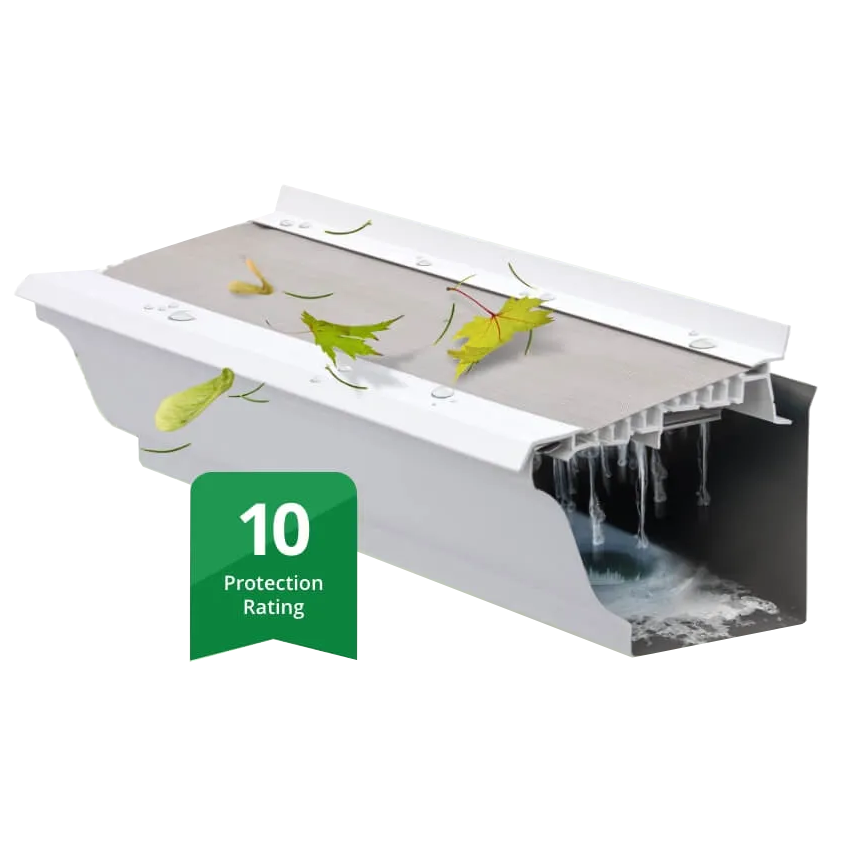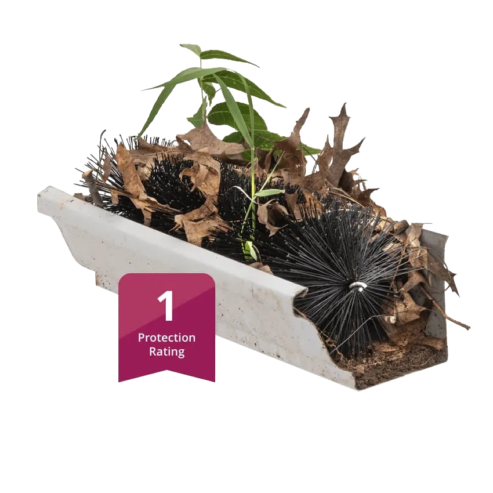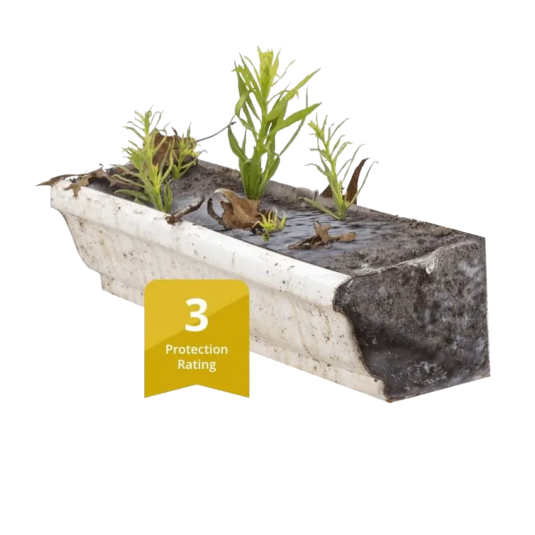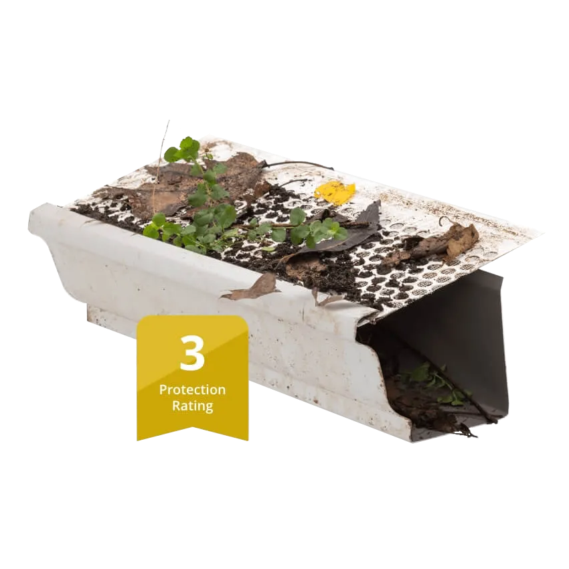Your Complete Guide to Gutter Protection
There are different kinds of gutter guard types. Below are explanations of each along with their pro's and con's. New England Gutter Protection has found one that is the best. It's the only one we install and work with and we offer a lifetime maintenance free warranty with it.
Types of Gutter Guards Explained
MICROMESH WITH CHANNELS GUTTER GUARD
New England homeowners face unique challenges when it comes to gutters, especially during harsh winters, the fall's heavy leaf drop, spring downpours, and summer storms. Our gutter guards are made from surgical-grade stainless steel mesh, which offers exceptional protection against debris common in New England. This professional-grade material can withstand the region's freeze-thaw cycles without compromising its effectiveness, preventing debris from clogging gutters and leading to the formation of ice dams.
The pitched design of the gutter guards ensures optimal water flow while shedding debris. This system has been tested and proven to protect your gutters from clogs during even the heaviest rain and snow events, giving New England homeowners peace of mind throughout all four seasons.

PRO's
- Lifetime Maintenance Free Warranty
- Keeps large and small items out of gutters
CON's
- Expensive
BRUSH GUTTER GUARDS
Brush guards consist of bristle filaments that initially block large debris while allowing water flow. This type of guard struggles with heavy fall foliage from maple and oak trees as well as small debris such as pollen, seeds and insects. Small particles accumulate between bristles over time, requiring regular cleaning or risk clogs. Additionally, during harsh New England winters, trapped moisture freezes within the brushes, potentially contributing to ice dams and gutter damage, especially during freeze-thaw cycles typical of Boston’s coastal climate.

PRO's
- Inexpensive
- Keeps large items out of gutters
CON's
- Allows smaller debris to build up and eventually clog
- Regular cleaning maintenance is needed
FOAM GUTTER INSERTS
Foam inserts are porous materials that fit inside gutters to block debris while allowing water passage. In Boston’s variable climate, they quickly become problematic as pine needles from local evergreens penetrate and lodge in the foam. During nor’easters and heavy downpours, these inserts often become saturated, reducing water flow. Boston’s coastal humidity accelerates deterioration, typically requiring replacement every 1-2 years. Additionally, maple seeds common in Jamaica Plain and Roslindale often germinate in the moist foam, creating maintenance headaches.

PRO's
- Inexpensive
- Keeps large items out of gutters
CON's
- Allows smaller debris to build up and eventually clog
- Leaves and larger debris gets stuck on top
- Plants and weeds tend to grow inside gutters
- Regular cleaning maintenance is needed
- 1-2 years life
SCREEN GUTTER GUARDS
Screen gutter guards are mesh covers with relatively large openings that fit over gutters. While affordable for homeowners, they allow smaller debris like pollen, insects, pine needles and other leaf debris to pass through which ultimately creates buildup that needs to be cleaned periodically. Some versions use metal screens which rust overtime, then brake and allow larger debris to enter your gutters and clog. Some versions use plastic screens which crack and brake over time due to intense UV exposure and freeze-thaw cycles. Lastly, if the screens are not installed at an angle or they begin to deteriorate and sag, they create gaps and pockets that debris will buildup in that will compromise protection.

PRO's
- Moderately expensive
- Keeps large items out of gutters
CON's
- Allows smaller debris to build up and eventually clog
- Limited life depending on material used
- Requires annual check to things are working correctly
REVERSE CURVE HOOD GUTTER GUARDS
Screen gutter guards are mesh covers with relatively large openings that fit over gutters. While affordable for homeowners, they allow smaller debris like pollen, insects, pine needles and other leaf debris to pass through which ultimately creates buildup that needs to be cleaned periodically. Some versions use metal screens which rust overtime, then brake and allow larger debris to enter your gutters and clog. Some versions use plastic screens which crack and brake over time due to intense UV exposure and freeze-thaw cycles. Lastly, if the screens are not installed at an angle or they begin to deteriorate and sag, they create gaps and pockets that debris will buildup in that will compromise protection.

PRO's
- Moderately expensive
- Keeps large items out of gutters
CON's
- Allows smaller debris to build up and eventually clog
- Limited life depending on material used
- Requires annual check to things are working correctly


